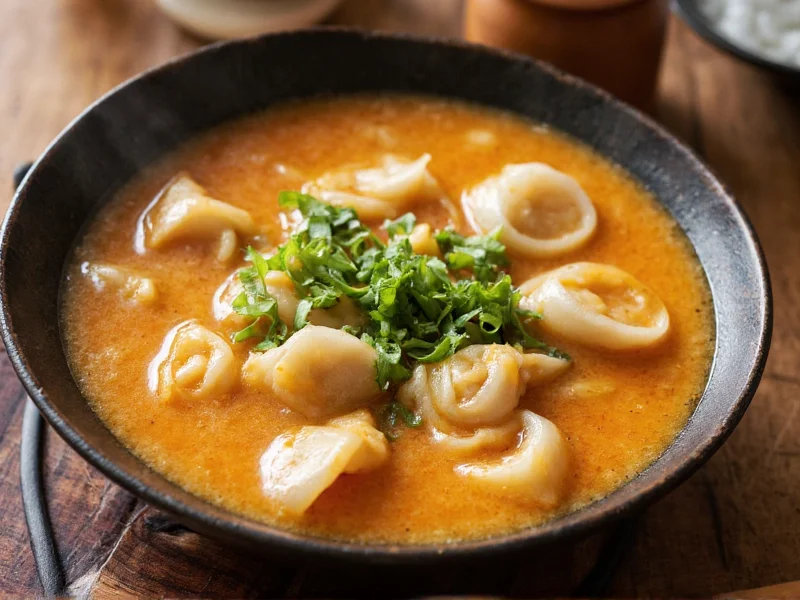When exploring Chinese-American cuisine, few dishes capture the essence of culinary adaptation quite like subgum wonton soup. This beloved variation of traditional wonton soup has become a staple in Chinese restaurants across North America, offering a more complex flavor profile and textural experience than its simpler counterpart. Understanding what makes this dish unique requires examining both its historical roots and distinctive preparation methods.
Decoding “Subgum” in Chinese Culinary Terminology
The term “subgum” (sometimes spelled “soup gum” or “shu’ gum”) originates from the Cantonese phrase “sáp gǎam,” which literally means “mixed ingredients.” In Chinese-American culinary vocabulary, “subgum” specifically denotes dishes containing multiple complementary ingredients, typically featuring a combination of meats and vegetables. This distinguishes subgum wonton soup from basic wonton soup, which traditionally contains only the wontons and perhaps a few simple garnishes in broth.
Essential Components of Authentic Subgum Wonton Soup
What truly sets subgum wonton soup apart is its carefully balanced combination of elements. The dish consists of three critical components that work in harmony: the wonton filling, the vegetable medley, and the broth base. Each element contributes to the soup's distinctive character.
| Component | Traditional Ingredients | Function |
|---|---|---|
| Wonton Filling | Ground pork, shrimp, ginger, green onions | Provides savory umami base |
| Subgum Vegetables | Bamboo shoots, water chestnuts, mushrooms, bok choy | Adds texture and visual appeal |
| Broth | Chicken or pork bone broth, sesame oil, white pepper | Creates aromatic foundation |
Historical Evolution of Subgum Wonton Soup
While traditional Cantonese wonton soup dates back centuries in southern China, the subgum variation emerged primarily in Chinese-American restaurants during the mid-20th century. As Chinese immigrants adapted their culinary traditions to available ingredients and local tastes in America, they began incorporating additional vegetables into classic dishes. The addition of bamboo shoots, water chestnuts, and mushrooms—ingredients that were more readily available in American markets than some traditional Chinese vegetables—created the distinctive subgum style.
This culinary innovation represents a perfect example of how immigrant communities preserve cultural traditions while adapting to new environments. The subgum approach allowed Chinese restaurateurs to maintain the essence of wonton soup while creating a more substantial, visually appealing dish that resonated with American diners seeking variety and texture in their meals.
Distinguishing Subgum Wonton Soup from Regular Wonton Soup
Many diners confuse subgum wonton soup with standard wonton soup, but several key differences define each preparation. Regular wonton soup typically features only the wontons themselves floating in a clear broth, sometimes with a few scallions or leafy greens. In contrast, authentic subgum wonton soup always includes multiple vegetable components that provide contrasting textures and colors.
The vegetable mixture in subgum wonton soup isn't merely decorative—each component serves a purpose. Bamboo shoots contribute a delicate crunch, water chestnuts add sweetness and firmness, mushrooms provide earthiness, and leafy greens like bok choy offer freshness. This careful balance of textures and flavors creates a more complex eating experience that has made subgum wonton soup particularly popular in Western markets.
Regional Variations Across Chinese Cuisine
While subgum wonton soup is most commonly associated with Chinese-American restaurants, variations of this concept exist throughout Chinese culinary traditions. In Guangdong province (the birthplace of Cantonese cuisine), similar soups might feature different regional vegetables or preparation methods. Some versions incorporate seafood like scallops or fish balls alongside the traditional pork and shrimp wontons.
Modern interpretations have expanded the subgum concept to include vegetarian and vegan options, using tofu, wood ear mushrooms, and additional vegetables to create satisfying meat-free alternatives. These adaptations demonstrate the dish's versatility while maintaining the core principle of “mixed ingredients” that defines the subgum style.
Identifying Authentic Subgum Wonton Soup
When seeking authentic subgum wonton soup, certain characteristics distinguish quality preparations from inferior versions. First, the broth should be clear yet flavorful—never cloudy or greasy. The wontons should maintain their integrity without falling apart in the broth, with visible filling through the translucent wrappers. Most importantly, the vegetable components should be crisp-tender rather than overcooked and mushy.
Authentic preparations balance the various elements so no single component dominates. The broth provides a subtle foundation that allows the wontons and vegetables to shine, while the vegetables offer contrasting textures that enhance rather than overwhelm the delicate wontons. This careful equilibrium represents the hallmark of well-executed subgum wonton soup.
Nutritional Profile and Dietary Considerations
Subgum wonton soup offers a relatively balanced nutritional profile compared to many Chinese-American dishes. The clear broth base keeps calorie content moderate, while the inclusion of multiple vegetables increases fiber and vitamin content. Traditional pork and shrimp wonton fillings provide protein, though sodium levels can be high depending on broth preparation.
For those with dietary restrictions, subgum wonton soup can often be adapted. Gluten-free versions use rice paper wrappers instead of traditional wheat-based wonton skins. Vegetarian adaptations replace meat fillings with tofu and mushrooms while maintaining the signature vegetable medley. These modifications demonstrate the dish's flexibility while preserving its essential character.
Common Misconceptions About Subgum Wonton Soup
Several misconceptions surround subgum wonton soup, particularly regarding its origins and preparation. Some believe it's an authentic traditional Chinese dish rather than a Chinese-American innovation. Others confuse it with egg drop soup or other Chinese soups featuring multiple ingredients. Perhaps the most persistent myth is that “subgum” refers to a specific ingredient rather than denoting the mixed nature of the dish.
Understanding these distinctions helps appreciate subgum wonton soup for what it is—a successful culinary adaptation that has earned its place in both Chinese-American restaurants and home kitchens. Its enduring popularity speaks to the universal appeal of well-crafted comfort food that balances tradition with innovation.











 浙公网安备
33010002000092号
浙公网安备
33010002000092号 浙B2-20120091-4
浙B2-20120091-4